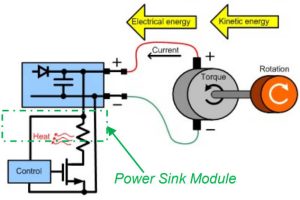
“The product line, SHF+, enables high-fidelity qubit control for more reliable manipulation of fragile quantum states,” according to the company. “The ‘+’ versions receive a newly designed analogue front-end with reduced noise floor and phase noise.”
SHFSG+ is an 8.5GHz signal generator with four or eight channels, depending on version, for control of up to eight qubits.
Each output is backed by a dc – 2Gsample/s 14bit arbitrary waveform generator with 1GHz bandwidth and a 6GHz 14bit DAC (after internal 3x interpolation, said the company). Waveform memory is 98ksample/channel.
The 50Ω outputs can be set between -30dBm and +10dBm.
SHFQC+ is the super-set instrument
SHFQA+ is the ‘quantum analyser’ which has two or four simplified (non-arbitrary) waveform outputs plus two or four input channels that an be switched between 0.5 – 8.5GHz (-50 to 10dBm), or dc – 800MHz (-30 to 10dBm). Input noise is <2.2nV/√Hz (<-160dBm/Hz) at -50dBm. Whether set to the low or high frequency range, the input path ends in an 14bit 4Gsample/s ADC then a digital mixer and low-pass filter.
This is followed by a multi-channel collection of filters and discriminators called the ‘qubit measurement unit’.
“By working closely with many leading quantum computing research groups, we’ve observed that the setup allows for reduction of the phase error limit down to levels of 10-6 for qubits in the millisecond lifetime range,” said company marketing manager Bruno Küng.
The most complex unit, effectively combining the above two instruments into one, is the SHFQC+ ‘qubit controller’ (pictured twice).
All the units can be operated though LabOne Q Software, LabOne, or LabOne’s APIs for Python, C, MATLAB, LabVIEW or .NET.
SHFQC+, SHFSG+ and SHFQA+ will be formally launched the American Physical Society’s, 4th – 8th of March meeting in Minneapolis.
 Electronics Weekly Electronics Design & Components Tech News
Electronics Weekly Electronics Design & Components Tech News



